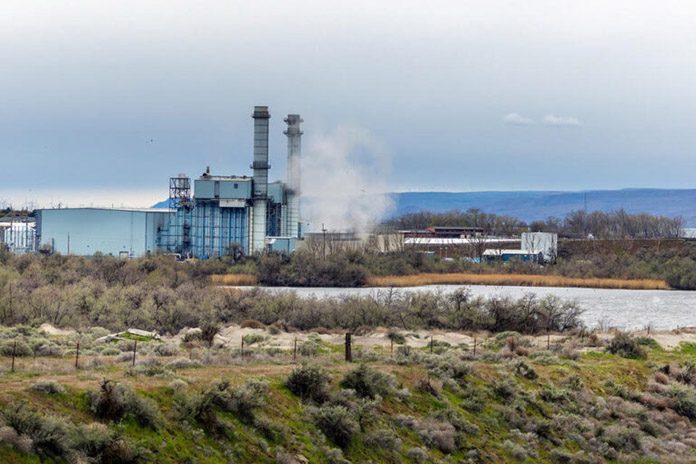
By Alex Baumhardt/Oregon Capital Chronicle
The Port of Morrow violated its wastewater permit more than 270 times in the last two months of 2023, overapplying nitrogen rich wastewater to fields atop an aquifer already contaminated by the compound, which is found in farm fertilizers and animal manure.
Managers at the port alerted officials at the Oregon Department of Environmental Quality, who expected the contamination and will eventually issue penalties, officials said. But state officials plan to wait several more months as the port likely continues to pollute. In the meantime, business as usual will continue at the state’s second largest port.
The violations follow years of pollution by the port, which has contributed to the contamination of well water that several thousand local residents rely on, including many low-income, Latino families. The environmental department essentially ignored the situation for years until issuing its first fine of $1.3 million in January 2022. That was bumped up to more than $2 million by June. An investigation by the Capital Chronicle found the port had not just violated its permit for three years, but for most of the last 15 years.
News of the latest pollution disappointed 82-year-old Gary Klinger, a resident of Boardman, where the port is located in eastern Oregon. Klinger had relied for years on his well drawing from the contaminated aquifer until he learned it contained three times the safe limit of nitrates.
“It’s sad that we have to be put through this, and we have to fight like this to have good water to drink,” he said.
The lack of regulatory action has confounded environmental and social justice organizers at the nonprofit Oregon Rural Action, who for the last few years have fought for state and federal resources to get wells tested in the area, filters installed in homes and safe water delivered to the 3,300 people who rely on wells in Morrow and Umatilla counties. Kaleb Lay, an organizer with the group, said the agency is giving a known bad actor a slap on the wrist.
The Port of Morrow’s director, Lisa Mittelsdorf, did not respond to multiple email requests for comment.
Officials at the Department of Environmental Quality say they knew port officials would violate their wastewater permit this winter and probably next, as they continue to deal with more wastewater than they can store or safely spread across farm fields. But, they said they are not allowing the port to pay to pollute.
“The port is making large investments in new infrastructure, but it will take time to design, construct and commission these improvements,” Antony Vorobyov, a spokesperson for the department, said in an email. “During this period, DEQ anticipates the port will continue to violate nitrogen application permit limits.”
The agency will issue penalties to the port after the winter, he said.
“DEQ is not allowing the port to violate its permit. DEQ is holding the port accountable for ongoing violations through stipulated penalties,” Vorobyov said.
Digester planned next year
Following the 2022 fines, the port agreed to invest $200 million in a digester system to reduce nitrogen levels in its wastewater. Vorobyov said state environmental regulators and the port, in a mutual agreement, acknowledged the port would struggle to come into compliance before 2025 when the digester system is slated to be finished.
The agency could mandate the port to stop or slow business to cut its wastewater to comply with the law. But officials, including Director Leah Feldon, decline to take that action.
“Shutting down the port would force food processors and other businesses in the region to shut down as well, causing significant economic disruption to many people who live and work in the region,” Vorobyov said. “Additionally, any action DEQ could take to force the port to shut down their operation or winter irrigation could be appealed by the port, and the port could continue to operate while DEQ takes this action. This process could also take years to resolve.”
The port has an economic output of more than $2.5 billion per year.
A complete tally of the port’s release of excess nitrogen and violations for that pollution will be tallied after the winter non-growing season, officials said. Officials at the agency and port have identified a number of methods to minimize the pollution over the next two years while the digester system is being built. Environmental regulators expanded the farm acreage where the port is allowed to dump wastewater, and the port has agreed to cut back on 57 million gallons of wastewater generated during the winter months by capping the water used by some companies doing business at the port.
The cutbacks are not likely to be enough to bring the port into compliance with its permit, however. The port handles more than 3.5 billion gallons of wastewater each year, an increase of 1 billion gallons in just the last decade.
Vorobyov expects the port to achieve compliance by 2025, he said.
That doesn’t give Klinger much solace. He lives downhill from farm fields that have received much of the port’s latest excess wastewater. Vorobyov characterized those fields as “low risk” of contamination, but Klinger is not risking his health, and he hasn’t used his contaminated well in years. He drinks bottled water that gets delivered weekly to his home.
“I think they should be trying to help the people in the community that have this situation,” he said. “There’s just got to be a way. We put a man on the moon, we can solve this water situation.”
This story first appeared in the Oregon Capital Chronicle.










